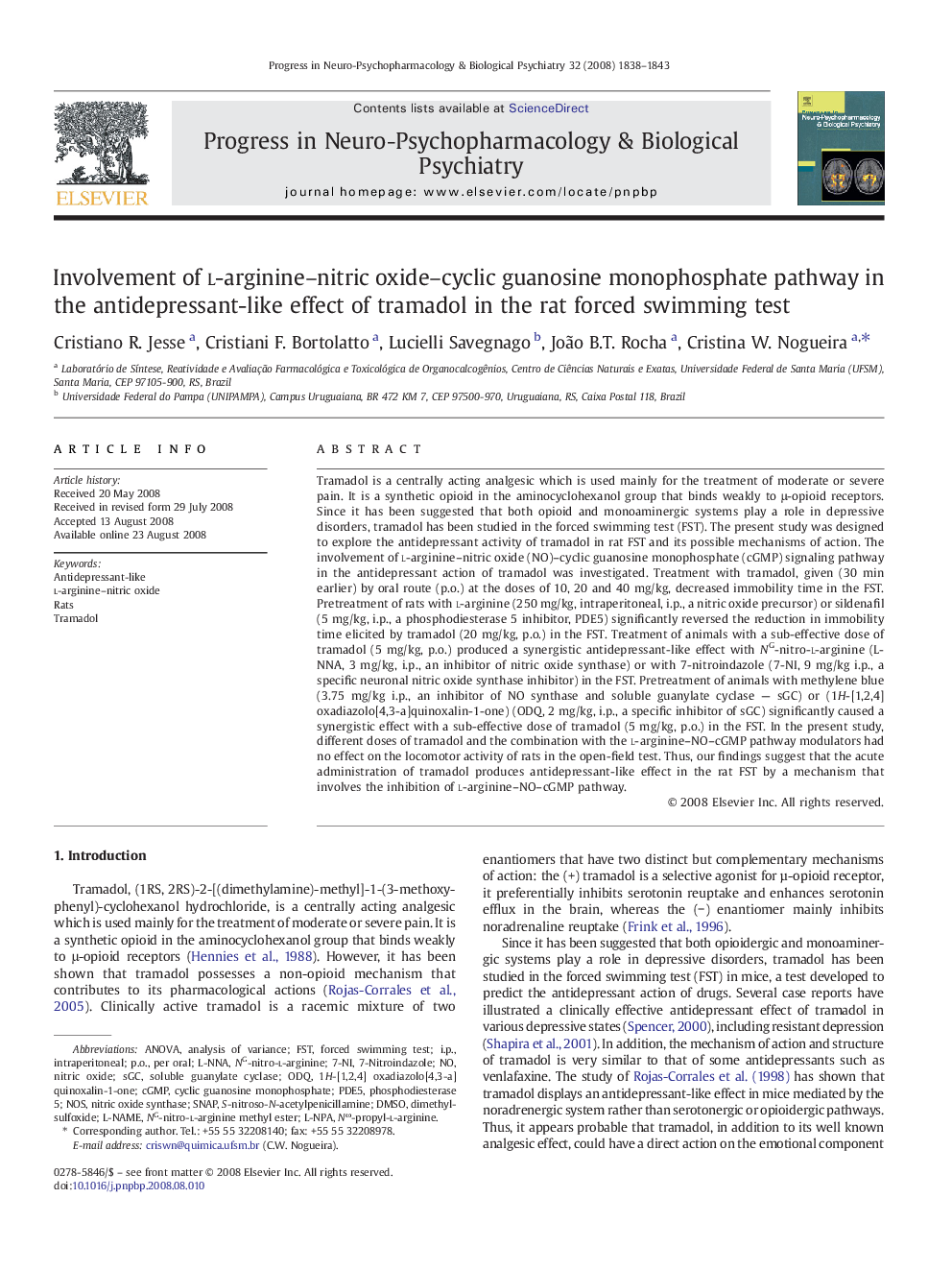| کد مقاله | کد نشریه | سال انتشار | مقاله انگلیسی | نسخه تمام متن |
|---|---|---|---|---|
| 2565283 | 1128055 | 2008 | 6 صفحه PDF | دانلود رایگان |

Tramadol is a centrally acting analgesic which is used mainly for the treatment of moderate or severe pain. It is a synthetic opioid in the aminocyclohexanol group that binds weakly to μ-opioid receptors. Since it has been suggested that both opioid and monoaminergic systems play a role in depressive disorders, tramadol has been studied in the forced swimming test (FST). The present study was designed to explore the antidepressant activity of tramadol in rat FST and its possible mechanisms of action. The involvement of l-arginine–nitric oxide (NO)–cyclic guanosine monophosphate (cGMP) signaling pathway in the antidepressant action of tramadol was investigated. Treatment with tramadol, given (30 min earlier) by oral route (p.o.) at the doses of 10, 20 and 40 mg/kg, decreased immobility time in the FST. Pretreatment of rats with l-arginine (250 mg/kg, intraperitoneal, i.p., a nitric oxide precursor) or sildenafil (5 mg/kg, i.p., a phosphodiesterase 5 inhibitor, PDE5) significantly reversed the reduction in immobility time elicited by tramadol (20 mg/kg, p.o.) in the FST. Treatment of animals with a sub-effective dose of tramadol (5 mg/kg, p.o.) produced a synergistic antidepressant-like effect with NG-nitro-l-arginine (L-NNA, 3 mg/kg, i.p., an inhibitor of nitric oxide synthase) or with 7-nitroindazole (7-NI, 9 mg/kg i.p., a specific neuronal nitric oxide synthase inhibitor) in the FST. Pretreatment of animals with methylene blue (3.75 mg/kg i.p., an inhibitor of NO synthase and soluble guanylate cyclase — sGC) or (1H-[1,2,4] oxadiazolo[4,3-a]quinoxalin-1-one) (ODQ, 2 mg/kg, i.p., a specific inhibitor of sGC) significantly caused a synergistic effect with a sub-effective dose of tramadol (5 mg/kg, p.o.) in the FST. In the present study, different doses of tramadol and the combination with the l-arginine–NO–cGMP pathway modulators had no effect on the locomotor activity of rats in the open-field test. Thus, our findings suggest that the acute administration of tramadol produces antidepressant-like effect in the rat FST by a mechanism that involves the inhibition of l-arginine–NO–cGMP pathway.
Journal: Progress in Neuro-Psychopharmacology and Biological Psychiatry - Volume 32, Issue 8, 12 December 2008, Pages 1838–1843